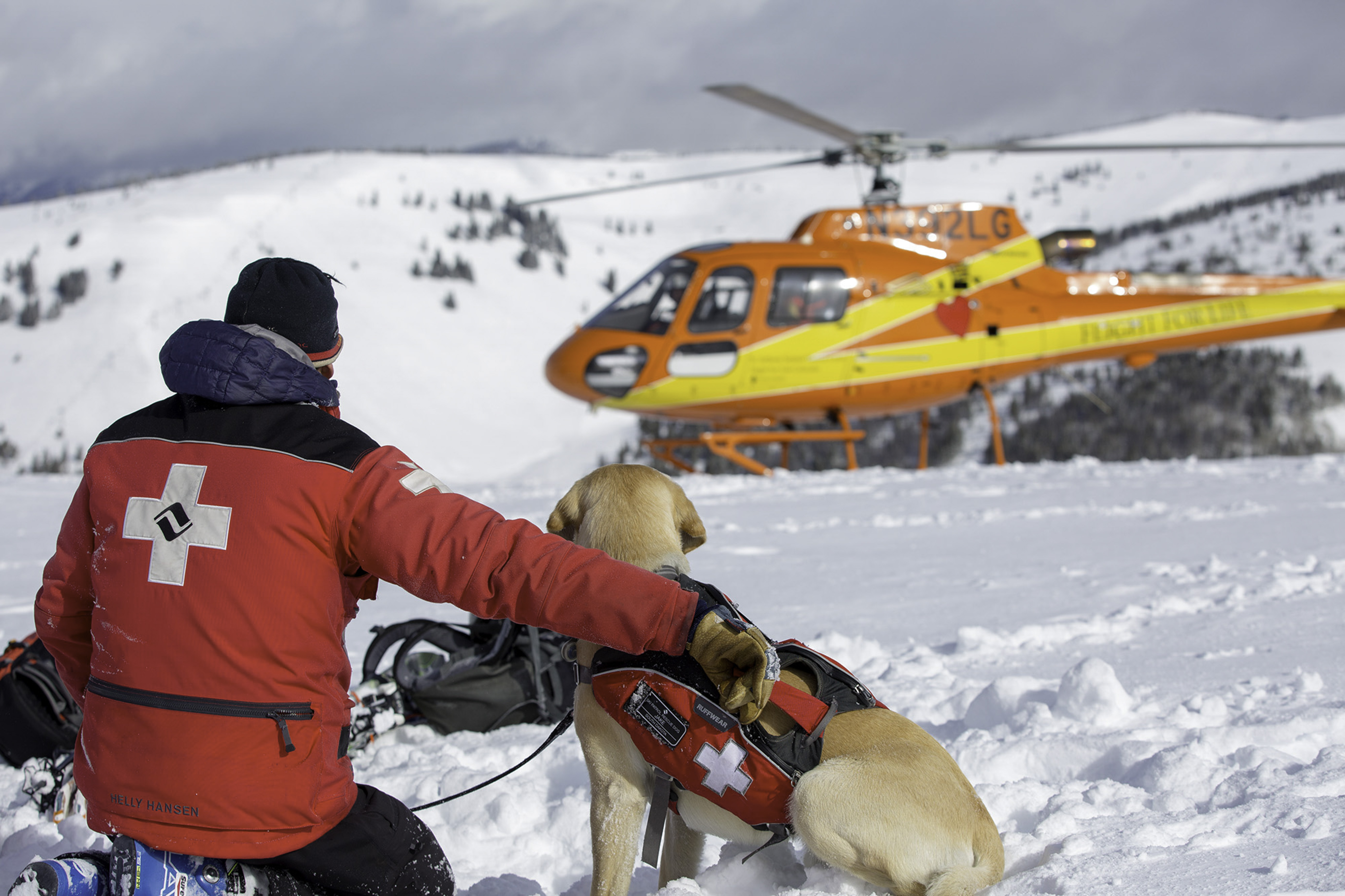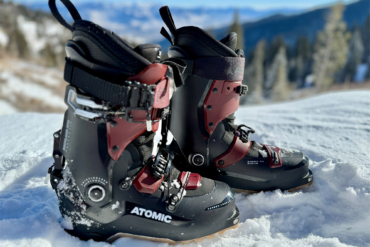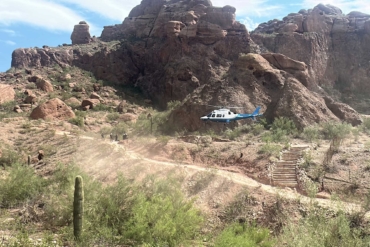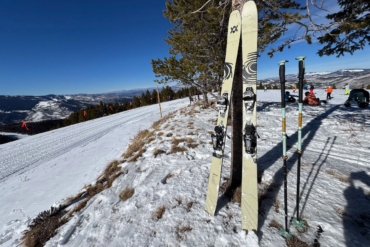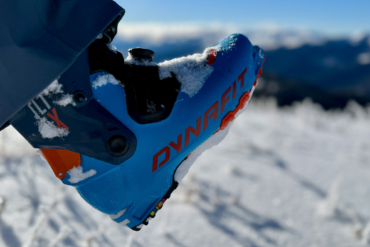We interview John Storkamp, who, in February with race partner Matt Long, finished the 350-mile, self-supported Iditarod footrace in 7 days, 5 hours, and 15 minutes.
John Storkamp is no stranger to embracing winter’s chill and moving long distances over snow. During the coldest months, while most people hibernate inside, the 33-year-old Minnesotan is often found pulling a sled full of survival gear across a frozen wilderness. He is a three-time winner of the Arrowhead 135, a February footrace that stretches 135 miles across Northern Minnesota.
Last month, Storkamp upped the ante and went to Alaska to compete in the Iditarod Trail Invitational. The 350-mile, self-supported footrace takes place on Alaska’s famous dog-sled trail. Storkamp and his race partner Matt Long finished the grueling race in 7 days, 5 hours, and 15 minutes. We caught up with Storkamp after his finish, still fresh from the frozen Alaska trail.
Interview: Iditarod Finisher John Storkamp

GearJunkie: Congrats on completing the race! What did it feel like to finish?
Storkamp: The finish was much different than I expected. In previous winter ultras such as the Arrowhead 135 and Tuscobia 150 I could not wait for them to be over, Much of this was due to trying to cover the distance of these “shorter” races in a single push and as a result feeling the effects of a faster pace and no sleep.
Since I was not racing to win, just complete it, on the Iditarod Trail 350, I got a decent amount of sleep during the event and still felt somewhat human at the end. Honestly, in the final miles I was really sorry that it was going to end but at the same time was also filled with a great sense of accomplishment.

GJ: What gear made the race possible?
S: For starters, the focus has to be on race-specific gear. For a few years, Matt Long, who I teamed up with for the race, and I helped Chris Evavold at Black River Sleds design a racing toboggan. After testing many prototypes, they provided us with the finished product, a model called the Arrowhead Racing Toboggan. This sled is a little different but it is the style of sled we have been using in Minnesota for a long time. We feel that this custom sled is the best option out there.
The next two most valuable pieces of gear are my cross-country ski poles, carbon fiber poles by One-Way, and my snowshoes, provided to me by Northern Lites. For this race I used Northern Lites’ Race model. They were durable and lightweight snowshoes to provide traction and stability, key out there.

GJ: Did any gear fail during the race?
S: No failures! Most everything I use has been vetted over nearly a decade of winter training and racing. When anything new gets added at this point I understand its function and limitations.
GJ: What was the best gear you brought?
S: To this day, I love a lot of the stuff that I have improvised. I use an old coyote fur hood that I took off a jacket and now can use it standalone. My mother, a great seamstress, covered it in a waterproof, coated nylon and it is perfect at below-zero temperatures.
Off the shelf, one of my favorites is the Patagonia Dragonfly Houdini Windshirt and matching pants. Yes, Houdini pants. The brand only made them for one season I believe. They need to bring those back! In warmer weather, these light clothes block the right amount of wind and hold in the right amount of heat. In real cold temperatures, they are worn over my base layers and under my Arc’teryx Gore-Tex jacket and shell pants.
For fuel, I’ve got to say ProBar. When I’m on the trail for several days and all of the normal endurance food is getting old, ProBar is as good as it gets. It tastes like real food and is loaded with calories and carbs perfect for this type of event.
I also have to mention Vaniply Ointment. This stuff saved my butt, literally, along with my feet and just about every other part of my body. Chaffing is a huge concern in this type of race.

GJ: Was there any other gear you wished you would’ve had with you?
S: I wish I’d have had larger versions of my jackets. It gets pretty hard to cram a Camelbak and other layers under my normal-size ones. It just hasn’t been in the budget to go out and buy a bunch of nice jackets in a size that I will only wear at winter races.
GJ: What did you eat out there?
S: I tried to consume about 4,500 to 5,500 calories a day. My staples are Hammer Gel, ProBars, candy bars, and Mike&Ikes. For protein, I go with either bacon, beef sticks or cheese.
GJ: What food did you crave the most on the trail?
S: Pizza! With tons of crushed red peppers.

GJ: What was your most dramatic moment?
S: Going over Rainy Pass was pretty awesome. It comes about halfway into the race and is a real milestone. Rainy Pass is often very cold and windy. The trail can be nonexistent and it feels like it takes hours to climb. We were fortunate enough to be able to find the trail even though it was a whiteout when we came through the pass. Just after hitting the pass you descend into the Dalzell Gorge, it is very beautiful and a portion of the Iditarod Sled Dog Race trail with a rich history and historical significance.
GJ: Was there a moment you thought about dropping out?
S: No.
GJ: Was this the hardest thing you’ve ever done?
S: If we are talking about life stuff, then no, I have had personal challenges that dwarf this race. If we are talking about racing only, the answer is no also. The times I have raced and won the Arrowhead 135, pushing from start to finish has been harder for me. All of that being said, this is a close second. Any time you go 350 miles averaging 50 miles per day with a heavy sled it is not easy.
GJ: How was Alaska compared to Minnesota’s Arrowhead 135?
S: Because of how I approached this race — holding back and not racing as hard, and getting plenty of sleep — it was easier. At the Arrowhead 135, I usually try to do it in a single push and don’t sleep much, if at all, plus I am typically moving much quicker at the Arrowhead. There were, however, many nuances to the Alaska race that I could not have known or planned for on Arrowhead experience alone. I really learned a lot.

GJ: Did you get sleep deprived and hallucinate out there?
S: As I mentioned, I got a lot of sleep so believe it or not no hallucinations at this one! At the Arrowhead in the past I have experienced hours of vivid and very annoying hallucinations.
GJ: Would you do the race again?
S: I am already planning to do it again, at least twice. I would like to go back and see how fast I can do the 350 miles. I would also like to do the full 1000-mile trail at some point. I don’t know when either of these will happen as it is a big time and financial commitment to do this race.
GJ: Do you have a mantra you say while running?
S: I have many, some catchier than others. For winter racing this year, doing 635 miles of racing in just over two months and having to be very patient at these very long races, I told myself the following: “Forget about time and distance, it’s none of your business, your only job is to keep moving forward.”
John Storkamp is the founder of and race director at Minnesota-based Rocksteady Running.
